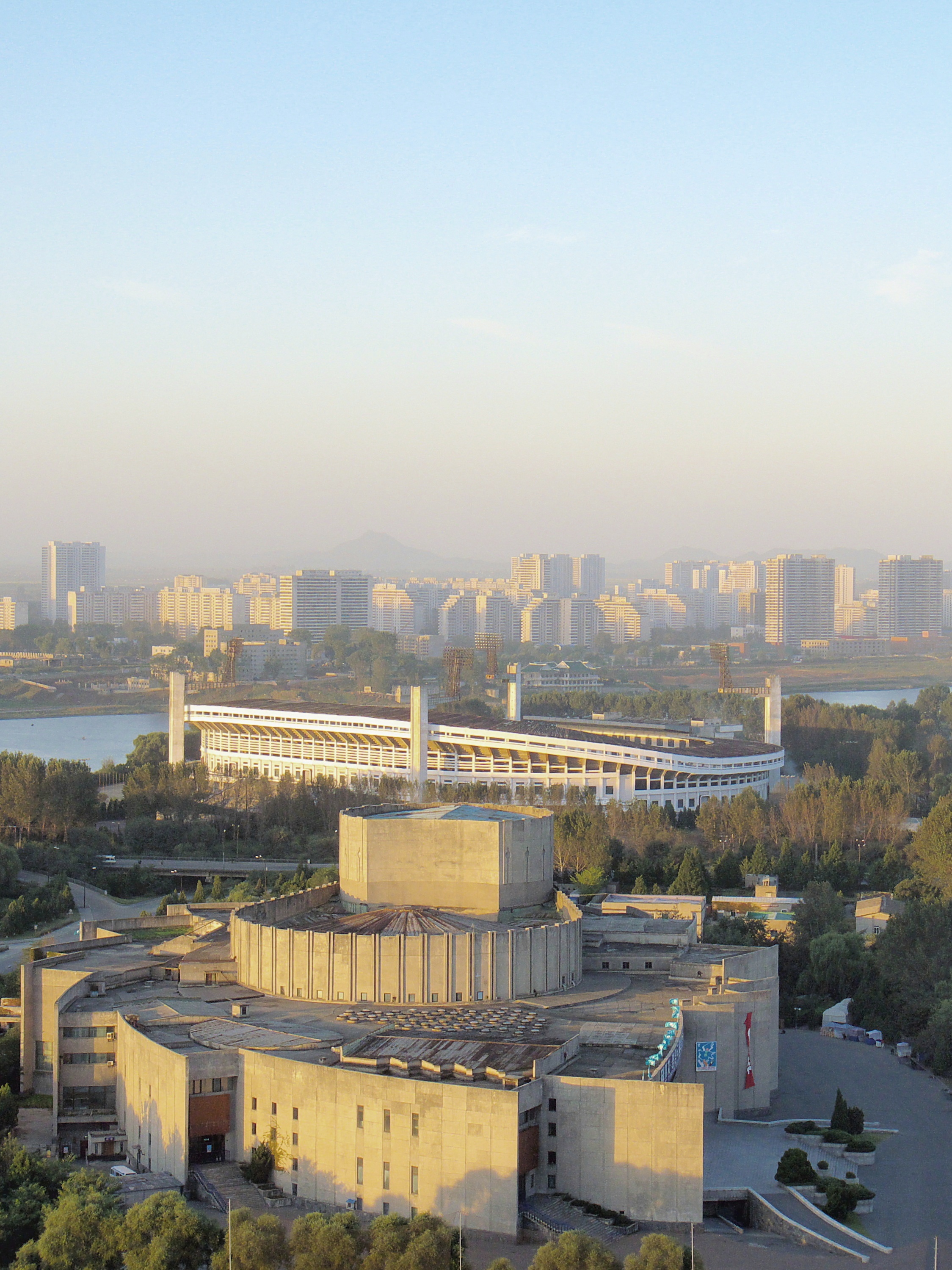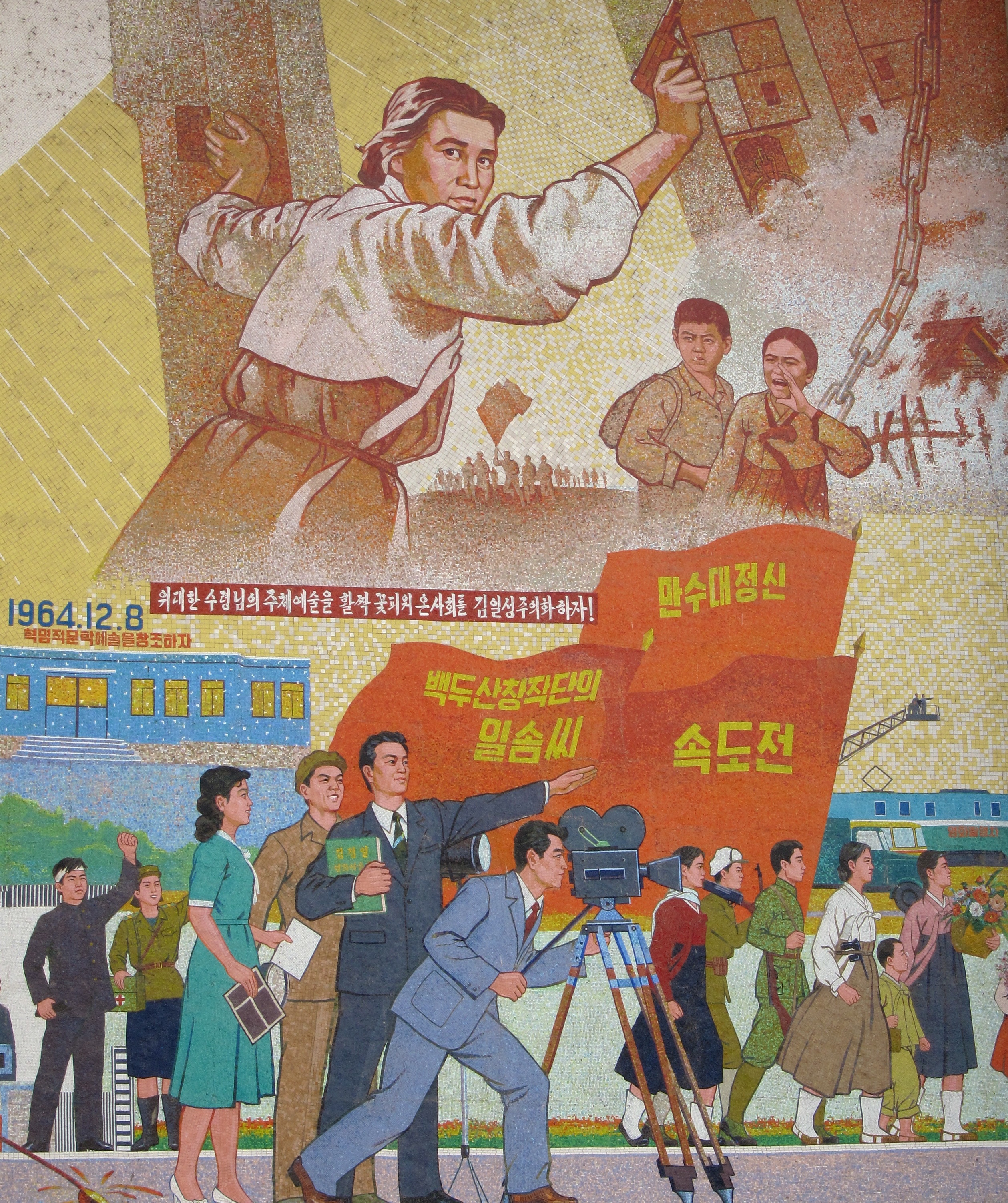|
Taedongmoon Cinema
Taedongmoon Cinema () is a movie theater located in Sungri Street, Chung-guyok, Pyongyang, North Korea. The cinema is located near the Taedong River. Taedongmoon Cinema was built in 1955. Its architectural style is that of retro; faux ancient Greek columns line its facade. Originally it had only a single screen, but since renovations to the interior in 2008, there have been two. It is considered the most important cinema of Pyongyang and serves as the flagship cinema for domestic film screenings. Occasionally, when foreign films are screened, the screening is for an invited audience only with no access by the general public. It is also used for screenings of the Pyongyang International Film Festival. See also * Cinema of North Korea *International Cinema Hall The International Cinema Hall () is a cinema located in North Korea. [...More Info...] [...Related Items...] OR: [Wikipedia] [Google] [Baidu] |
Chung-guyok
Chung-guyŏk (Central Ward) is one of the 18 '' guyok'' which constitute the city of Pyongyang, North Korea. The district is located in the center of the city, between the Pothonggang Canal and Taedong River, and is bordered to the north by Moranbong-guyok, to the northwest by Potonggang-guyok, and to the south by Pyongchon-guyok. Overview As the centre of Pyongyang, the district holds many of the city's most important buildings. The famous Kim Il-sung Square is located along the banks of the Taedong river, together with the Grand People's Study House, which is the national library of North Korea. Chung-guyok was once the historical centre of Pyongyang, and was almost completely obliterated during the Korean War by American bombing. Vestiges of the old city can still be seen, and the district is home to several of North Korea's National Treasures, including the rebuilt Potong and Taedong Gates, the Pyongyang Bell, the Ryongwang Pavilion, and the Sungryong and Sungin Halls. Other ... [...More Info...] [...Related Items...] OR: [Wikipedia] [Google] [Baidu] |
Taedong River
The Taedong River (Chosŏn'gŭl: ) is a large river in North Korea. The river rises in the Rangrim Mountains of the country's north where it then flows southwest into Korea Bay at Namp'o.Suh, Dae-Sook (1987) "North Korea in 1986: Strengthening the Soviet Connection" ''Asian Survey'' 27(1): pp. 56-63, page 62 In between, it runs through the country's capital, Pyongyang. Along the river are landmarks such as the Juche Tower and Kim Il-sung Square. The river is 439 km or 272.7 mi in length, and is generally deep. It is the fifth-longest river on the Korean peninsula and the second-longest in North Korea. Pyongyang is approximately 110 km upstream from the mouth, Sunchon 192 km upstream, and Taehŭng 414 km upstream. Because of its depth, it is widely used for river transport; it is navigable by large ships up to 65 km inland, although most commercial traffic stops at Songrim. History The kingdom of Koguryo was founded on its shores. Many archeological sites d ... [...More Info...] [...Related Items...] OR: [Wikipedia] [Google] [Baidu] |
Cinemas And Movie Theaters
A movie theater (American English), cinema (British English), or cinema hall ( Indian English), also known as a movie house, picture house, the movies, the pictures, picture theater, the silver screen, the big screen, or simply theater is a building that contains auditoria for viewing films (also called movies) for entertainment. Most, but not all, movie theaters are commercial operations catering to the general public, who attend by purchasing a ticket. The film is projected with a movie projector onto a large projection screen at the front of the auditorium while the dialogue, sounds, and music are played through a number of wall-mounted speakers. Since the 1970s, subwoofers have been used for low-pitched sounds. Since the 2010s, the majority of movie theaters have been equipped for digital cinema projection, removing the need to create and transport a physical film print on a heavy reel. A great variety of films are shown at cinemas, ranging from animated films to bl ... [...More Info...] [...Related Items...] OR: [Wikipedia] [Google] [Baidu] |
Buildings And Structures In Pyongyang
A building, or edifice, is an enclosed structure with a roof and walls standing more or less permanently in one place, such as a house or factory (although there's also portable buildings). Buildings come in a variety of sizes, shapes, and functions, and have been adapted throughout history for a wide number of factors, from building materials available, to weather conditions, land prices, ground conditions, specific uses, prestige, and aesthetic reasons. To better understand the term ''building'' compare the list of nonbuilding structures. Buildings serve several societal needs – primarily as shelter from weather, security, living space, privacy, to store belongings, and to comfortably live and work. A building as a shelter represents a physical division of the human habitat (a place of comfort and safety) and the ''outside'' (a place that at times may be harsh and harmful). Ever since the first cave paintings, buildings have also become objects or canvasses of much artistic ... [...More Info...] [...Related Items...] OR: [Wikipedia] [Google] [Baidu] |
Taedongmun
Taedong Gate is the eastern gate of the inner castle of the walled city of Pyongyang (Pyongyang Castle), and one of the National Treasures of North Korea. Located on the banks of the Taedong River, from which it gets its name, the gate was originally built in the sixth century as an official Koguryo construction, and, along with the Ryongwang Pavilion and Pyongyang Bell, served as the center of the inner castle's eastern defenses. The present construction dates from 1635, however, as the original was burnt to the ground during the Japanese invasions of Korea (1592–1598), Imjin wars of the late 16th century. The current gate features a granite base topped by a two-story pavilion, called the Euphoru Pavilion (읍호루, ), because of its grand views of the Taedong River. This pavilion houses two hanging name plaques, one, on the first storey, reading "Taedong Gate" and calligraphed Yang Sa-on, and the other, reading "Upho Pavilion", on the second storey and written by (박위). ... [...More Info...] [...Related Items...] OR: [Wikipedia] [Google] [Baidu] |
International Cinema Hall
The International Cinema Hall () is a cinema located in North Korea. ( ) It holds the . See also *List of theatres in North Korea
This is a list of theaters in North Korea.
* April 25 House of Culture
* Central Youth Hall
* East Pyongyang Grand Theatre
* Hamhung Grand Theatre
* International Cinema Hall
* Kalma Theatre
* Mansudae Art Theatre
* Mansudae Peopl ...
[...More Info...] [...Related Items...] OR: [Wikipedia] [Google] [Baidu] |
Cinema Of North Korea
The cinema of North Korea began with the division of Korea and has been sustained since then by the ruling Kim dynasty. Kim Il-sung and his successor Kim Jong-il were both cinephiles and sought to produce propaganda films based on the ''Juche'' ideology. All film production is supervised by the Workers' Party of Korea and generally concerns propaganda. North Korea has nevertheless produced some non-propaganda films for export to the wider world. Film studios North Korea's principal producer of feature films is the Korean Film Studio, a state-run studio founded in 1947 and located outside of Pyongyang. Other North Korean film studios include the Korean Documentary Film Studio (founded in 1946), the April 25 Film Studio of the Korean People's Army (founded in 1959 and previously known as the February 8 Cinema Studio) and the Korean Science and Educational Film Studio (founded in 1953 and also known as the April 26 Children's Film Production House, and Science Educational Kore ... [...More Info...] [...Related Items...] OR: [Wikipedia] [Google] [Baidu] |
Pyongyang International Film Festival
The Pyongyang International Film Festival is a biennial cultural exhibition held in Pyongyang, North Korea. Until 2002, the film festival was reserved to "non-aligned and other developing countries". History The event originated in 1987 as the Pyongyang Film Festival of the Non-aligned and Other Developing Countries(쁠럭불가담 및 기타 발전도상 나라들의 평양영화축전). The maiden event, held from September 1 through September 10, showed short films, features, and documentaries that were judged for competitive awards. The film festival returned in 1990 and would be regularly held every other year. Recurrent subject matter included domestic cinema that commonly praised the high leadership such as a film shown at the 1992 film festival, verbosely translated, ''Glory of Our People in Holding the Great Leader in High Esteem'', and foreign films about revolutionary resistance. In 2000, officials widened the acceptable breadth of film watching by screening Japanese f ... [...More Info...] [...Related Items...] OR: [Wikipedia] [Google] [Baidu] |
Pyongyang
Pyongyang (, , ) is the capital and largest city of North Korea, where it is known as the "Capital of the Revolution". Pyongyang is located on the Taedong River about upstream from its mouth on the Yellow Sea. According to the 2008 population census, it has a population of 3,255,288. Pyongyang is a directly administered city () with equal status to North Korean provinces. Pyongyang is one of the oldest cities in Korea. It was the capital of two ancient Korean kingdoms, Gojoseon and Goguryeo, and served as the secondary capital of Goryeo. Much of the city was destroyed during the First Sino-Japanese War, but it was revived Korea under Japanese rule, under Japanese rule and became an industrial center. Following the establishment of North Korea in 1948, Pyongyang became its ''de facto'' capital. The city was again devastated during the Korean War, but was quickly rebuilt after the war with Soviet Union, Soviet assistance. Pyongyang is the political, industrial and transport ... [...More Info...] [...Related Items...] OR: [Wikipedia] [Google] [Baidu] |
Movie Theater
A movie theater (American English), cinema (British English), or cinema hall ( Indian English), also known as a movie house, picture house, the movies, the pictures, picture theater, the silver screen, the big screen, or simply theater is a building that contains auditoria for viewing films (also called movies) for entertainment. Most, but not all, movie theaters are commercial operations catering to the general public, who attend by purchasing a ticket. The film is projected with a movie projector onto a large projection screen at the front of the auditorium while the dialogue, sounds, and music are played through a number of wall-mounted speakers. Since the 1970s, subwoofers have been used for low-pitched sounds. Since the 2010s, the majority of movie theaters have been equipped for digital cinema projection, removing the need to create and transport a physical film print on a heavy reel. A great variety of films are shown at cinemas, ranging from animated films to bloc ... [...More Info...] [...Related Items...] OR: [Wikipedia] [Google] [Baidu] |
Sungni Station
Sungni station is a station Station may refer to: Agriculture * Station (Australian agriculture), a large Australian landholding used for livestock production * Station (New Zealand agriculture), a large New Zealand farm used for grazing by sheep and cattle ** Cattle statio ... on Chŏllima Line of the Pyongyang Metro. References External links * Railway stations opened in 1973 Pyongyang Metro stations 1973 establishments in North Korea {{NorthKorea-railstation-stub ... [...More Info...] [...Related Items...] OR: [Wikipedia] [Google] [Baidu] |





